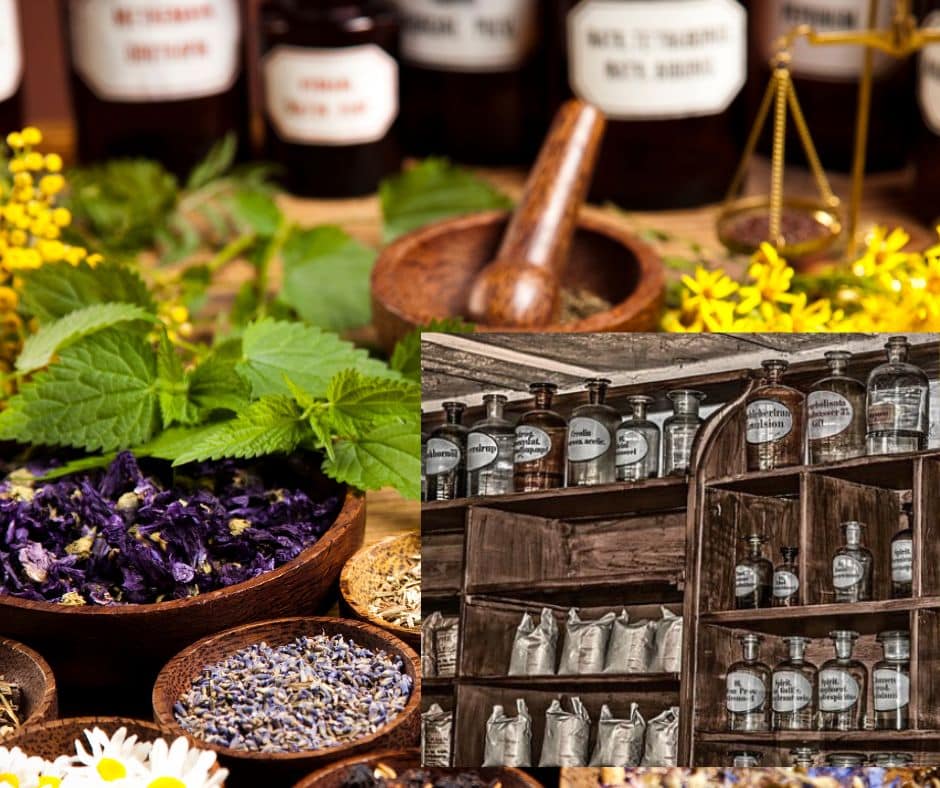Most travellers come for surf breaks, hanging bridges and rumbling volcanoes, then stay for gallery nights, marimba in the plaza and ceviche still singing with lime. Step behind a tin-roofed home, though, and you’ll find another strand of Costa Rican life: a backyard pharmacy where leaves staunch bleeding, flowers soothe the gut and bark calms fevers. Here, adventure meets culture, entertainment blends with wildlife, and even real estate and business are shaped by tradition—eco-lodges plan herb beds into their landscaping, family sodas brew heritage infusions, and markets trade in bundles of green comfort. Food, after all, is medicine as well as flavour.
What do Ticos mean by “bush medicine”?
Bush medicine is the everyday use of local plants to ease common ailments, guided by abuelas’ know-how and indigenous wisdom. It lives along fence lines and forest edges, passed mouth-to-ear, season to season, rather than bottled on a shelf. A remedy is as close as the kitchen door, and knowledge is measured in leaves, not labels.
Why does this tradition still thrive?
It endures because it’s accessible, affordable and culturally rooted, and it often complements modern care. Families reach first for what grows outside, especially for minor complaints, before heading to the clinic.
- Proximity: Remedies are literally steps away. A grandmother can cross packed earth in her sandals, pinch off a llantén leaf beaded with dew, and be back at the sink in moments. The humid air keeps plants vigorous; after the first rains, new growth surges and the home larder refills in green.
- Price: A handful of leaves costs nothing but attention to the seasons. When a child wakes with a queasy stomach, guava leaves become a quick, warm tea, saving time and colones—especially important in rural districts where clinics mean bus rides and missed work.
- Identity: Preparing a tea the way a grandmother did stitches family story to place. Children learn plant names in Spanish and Bribri or Cabécar, remembering which hedge turns purple after storms and which blossom unfurls at dusk. The act of making medicine becomes a small daily ceremony of belonging.
- Pairing with science: Herbs sit beside prescriptions, not in opposition. A doctor treats the infection; a kitchen brew soothes the throat and steadies the nerves. Respect for both traditions keeps the practice practical rather than romantic.
Which backyard plants are household staples—and what are they used for?
Each plant has a typical preparation—infusion, decoction, poultice or syrup—tuned by family habit and the season’s mood.
- Llantén (Plantago major): The thick, cool leaves are crushed between clean fingers until they gloss, then laid on a nick or sting. The mucilage feels like a thin gel pad, drawing heat and slowing a trickle of blood while the scent of crushed green rises—a quiet, immediate relief on a hot afternoon.
- Guava leaf (Psidium guajava): Young, tannin-rich leaves are rinsed and simmered to make a gently bitter brew that softens cramps and steadies diarrhoea. Sipped warm after meals, it leaves a clean, dry finish on the tongue and a sense that the belly has been politely persuaded to behave.
- Sábila/Aloe vera (Aloe vera): A knife slips under the skin of the leaf and the clear gel slides out like cool glass. Smoothed over sun-pink shoulders or a careless kitchen burn, it calms the sting within seconds and dries to a light film, a plant-made dressing you can feel working as the heat subsides.
- Amor seco/Blackjack (Bidens pilosa): Picked before the barbed seeds hitch a ride on trousers, the leaves make a bracing, astringent tea for sore throats. Gargled, it tightens the mouth and seems to lift the rawness from the voice, as if the plant were tidying up the edges of irritation.
- Flor de itabo/Izote (Yucca guatemalensis): Petals are rinsed to remove their faint sap bitterness, then tossed with egg or steeped into a pale tea. On the plate they’re tender with a barely herbal snap, and in the cup they settle the sense of “heaviness” after a meal—grandmother’s way of ending lunch light.
- Guácimo (Guazuma ulmifolia): Bark shavings simmer into a cocoa-coloured decoction that carries a woody sweetness. Taken slowly, it eases a queasy stomach and relaxes the tightness of a cough; you can taste the tree’s cool shade in each sip.
- Oregano criollo (Lippia graveolens): Rub the leaf and the room fills with a peppery, citrus-tinged punch. Steaming bowls—water laced with crushed leaves—become a simple inhalation therapy, loosening a blocked nose and leaving a clean trail of aroma through the chest.
- Ginger (Zingiber officinale): Sliced coins bloom in hot water with lemon and a spoon of local honey. The first mouthful is bright and fiery; warmth slides down the throat, soothing travel fatigue and the damp chill of a rainy-season evening.
- Mariola honey (Melipona spp., stingless bees): Tangier and thinner than honeybee honey, it’s dabbed on small scrapes or mixed into syrups. A fingertip is enough; the sharp-sweet taste lingers while the skin beneath seems to quiet and knit.
- Ruda/Rue (Ruta graveolens): A plant of strong opinions—aromatic, resinous, potent. Traditionally, it’s used in tiny amounts for cramps or as a protective charm. Knowledgeable hands treat it with respect and avoid it entirely in pregnancy.
Note: Correct identification and gentle dosing matter; when in doubt, ask a knowledgeable local or a health professional.

Is any of this backed by research?
Some remedies are supported by studies, others by promising lab work, and a few remain purely traditional. Guava leaf shows antimicrobial and anti-diarrhoeal potential; aloe gel is well regarded for minor burns; ginger’s anti-inflammatory effects are widely noted; and Bidens pilosa has demonstrated antibacterial activity in vitro. Quality, dose and preparation change outcomes—these are kitchen medicines, not fixed-dose tablets.
How do people prepare remedies safely at home?
Keep it simple, clean and moderate, and avoid strong herbs in pregnancy or with chronic conditions.
- Infusions (teas): Tender leaves and flowers are covered with just-off-boiling water and capped for 5–10 minutes. This gentle steeping coaxes aroma without harshness, delivering comfort rather than a shock of bitterness.
- Decoctions: Tough bark and roots are simmered 10–20 minutes so their sturdier compounds can loosen into the water. The kitchen smells like clean timber; the liquid turns from straw to amber to tea-brown as the medicine is drawn out.
- Poultices: Fresh leaves are rinsed and lightly bruised to release sap, then laid on intact skin for brief periods. The relief is tactile and immediate—coolness, moisture, a sense that the sting or heat is being absorbed by the leaf’s soft body.
- Syrups: A base tea—ginger, guava, or oregano—is sweetened with local honey and reduced to a silky spoonful. It slides over a scratchy throat like a friendly hand and keeps well for a few days in a cool, dark cupboard.
- Storage: Small batches shine. Glass jars, labelled simply with plant and date, prevent guesswork; most teas are brewed fresh, because the rainforest’s pharmacy is best served from the day’s harvest.
Where can visitors experience bush medicine respectfully?
Look for community-led tours, markets and workshops that centre local voices. The best encounters support livelihoods and pass knowledge on with consent.
- Plant walks: In Monteverde’s cloud forests or along Talamanca’s Caribbean slope, guides point out a dozen cures within a few paces—what to pick, what to leave, and the stories stitched to each species.
- Ferias del agricultor (farmers’ markets): Stalls pile herbs next to papayas and farmer cheese. Sellers explain which leaf to brew after a heavy lunch and which to rub on a mosquito kiss; your bag becomes a portable apothecary.
- Eco-lodges and spas: Gardens double as pharmacies. After a day of zip-lines or surf, guests sip fresh-cut infusions or lean over herbal steams while rain patters on palm thatch and the body unknots at last.
A last word from the garden
Bush medicine is as much about relationship as relief: hands in soil, stories at the stove, a cup shared on a breezy veranda while toucans rattle the almonds. Whether you own a wellness-minded home with an herb patch, run a small lodge, or simply love good food that makes you feel better, Costa Rica’s backyard cures offer a reminder—health can be fragrant, simple and very close to home.
This article is cultural and educational, not medical advice. For serious symptoms or ongoing conditions, seek professional care.






